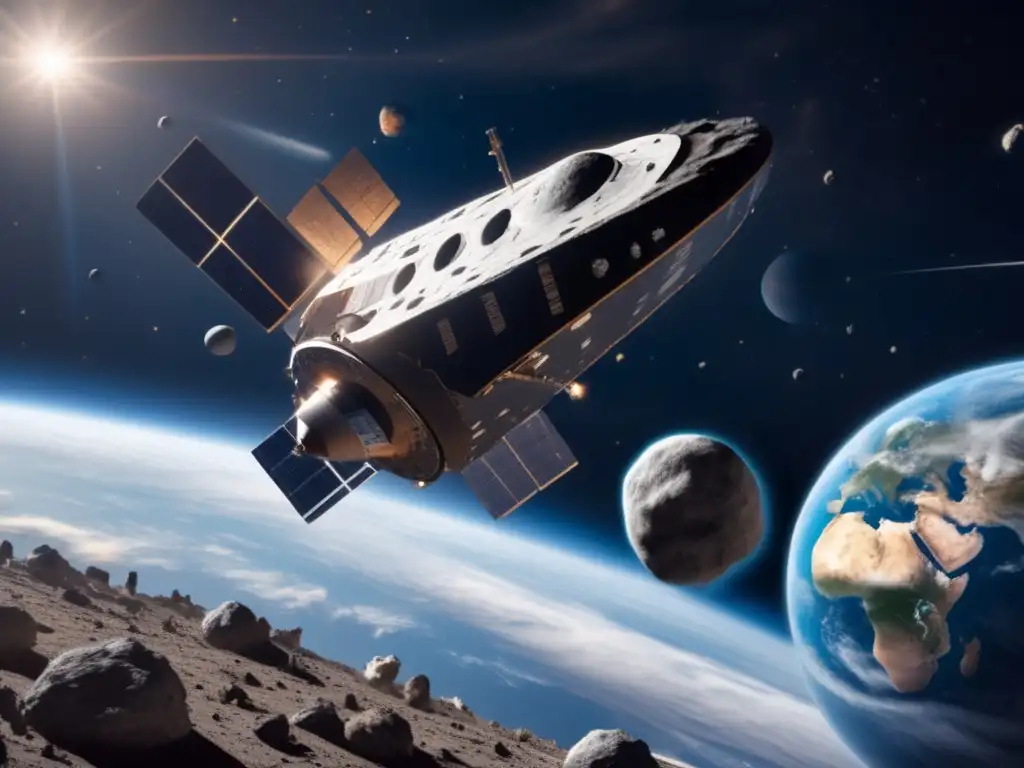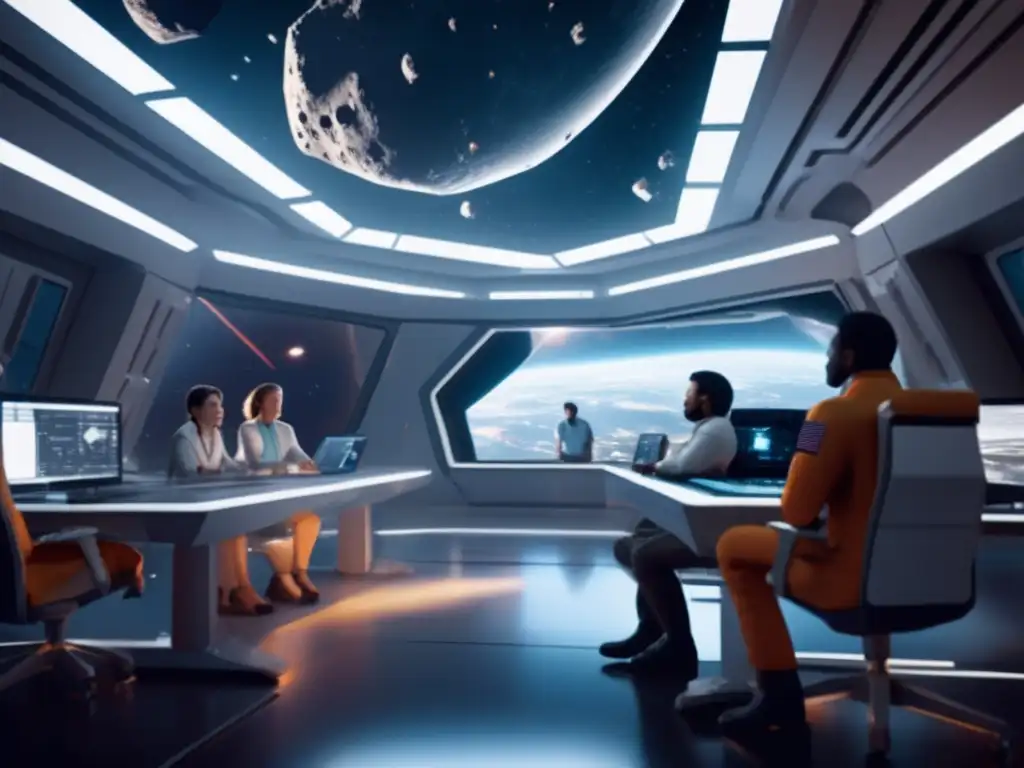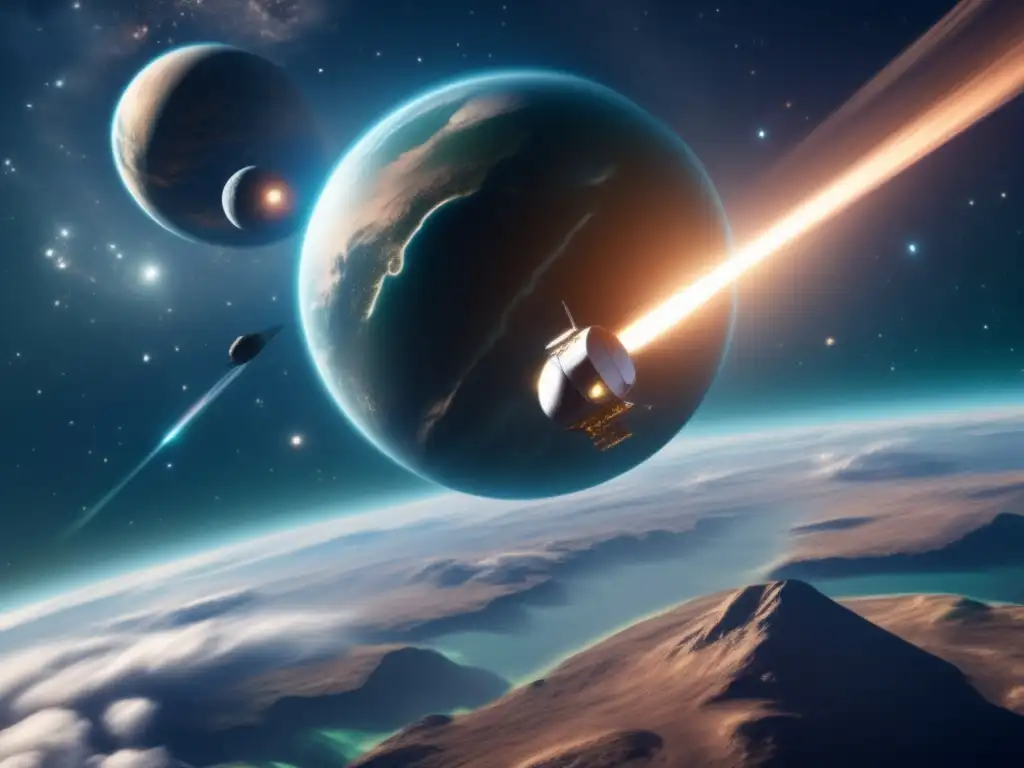The Skyward Shield: Strategies For Asteroid Defense

Introduction
Asteroids pose a significant threat to our planet. The potential for large-scale destruction from an asteroid impact is very real, and we need to be prepared. It's essential to establish effective asteroid defense strategies to protect ourselves and future generations from this danger. In this article, we'll explore some of the most promising tactics that are available for planetary defense against asteroids.
Near Earth Objects (NEOs) Detection

Telescopes
One of the main strategies for detecting near-Earth objects (NEOs) is using telescopes. Optical telescopes are capable of detecting fast-moving objects, such as asteroids, by detecting the light they reflect. The primary telescope used for this purpose is the Panoramic Survey Telescope and Rapid Response System (Pan-STARRS). It is a wide-field imaging facility and is capable of detecting objects as small as 300 meters in diameter.
Radar detection
Another method is radar detection. This technology is particularly useful for detecting smaller NEOs that may not be visible through optical telescopes. The Arecibo Observatory in Puerto Rico is one of the most powerful radar facilities in the world. It can detect NEOs up to a distance of 2.5 million miles away.
Space-based observations
Space-based telescopes, like the Nancy Grace Roman Space Telescope, can also be used to detect NEOs. It has a wide field of view, which makes it useful for detecting faint objects and can locate asteroids that could be missed from ground-based observatories.
Asteroid Deflection Techniques

Kinetic Impactors
The use of kinetic impactors involves crashing a spacecraft into an asteroid to change its direction. The spacecraft collides with the asteroid at high speed, causing the asteroid to deflect from its original trajectory. This method can be effective for small to medium-sized asteroids, but may not be enough for larger ones.
Gravity Tractors
A gravity tractor is a spacecraft that maneuvers close to an asteroid for an extended period. The spacecraft's gravity will pull on the asteroid, gradually altering its trajectory over time. This technique is more effective for larger asteroids and may take longer to implement.
Nuclear Explosives
This method involves detonating a nuclear device near or on the asteroid's surface. The explosion creates a shockwave that could alter the asteroid's course. It is considered a last resort and only used in extreme situations.
Planetary Defense Coordination

International cooperation
Managing planetary defense requires international coordination. The United Nations' Committee on the Peaceful Uses of Outer Space (COPUOS) is responsible for facilitating international cooperation on space-related activities. The International Asteroid Warning Network (IAWN) and the Planetary Defense Coordination Office (PDCO) are also important global initiatives focused on planetary defense.
Simulations and Drills
Another essential aspect of planetary defense is to practice simulations and drills to prepare for an actual asteroid threat. This approach helps governments and organizations to determine their roles and responsibilities in the event of an asteroid impact.
Funding and Research
More funding and research need to be allocated towards planetary defense. Governments and organizations need to work together to increase investments in research, technology, and infrastructure necessary for asteroid detection and mitigation.
Future Outlook

New technologies
New technologies are being developed continuously for asteroid defense. For instance, NASA is developing the Double Asteroid Redirection Test (DART) mission. This mission will test the kinetic impactors' effectiveness and could prove to be a game-changer for planetary defense.
Private Sector Participation
The private sector's participation is also critical for advancing asteroid defense. Private companies such as SpaceX and Blue Origin have shown interest in asteroid mining and exploration, which could coincide with planetary defense efforts.
Increased Public Awareness
To improve global awareness of the asteroid threat, greater efforts should be made to communicate the risk to the general public. Outreach programs, media coverage, and educational initiatives can help build support for planetary defense efforts.
Frequently Asked Questions

-
Can asteroid impacts be prevented entirely?
No. The best that we can do is detect, track, and deflect an asteroid's course if there is a threat of impact.
-
How often do asteroid collisions occur?
Asteroids collide with Earth on a regular basis, but most are too small to cause any significant damage. Large impacts happen infrequently, with the most notable event being the asteroid that caused the extinction of the dinosaurs about 66 million years ago.
-
How much time do we have to prepare for an asteroid impact?
It can take several years to prepare for an asteroid impact. Early detection is crucial, and the earlier we detect a potential impact, the more time we have to deflect it.
-
What happens if we fail to deflect an asteroid?
If we fail to deflect an asteroid, it could lead to a catastrophic impact with devastating consequences. Depending on the size and speed of the asteroid, it could cause significant damage to cities and towns, and even trigger a global environmental catastrophe.
-
Who is responsible for managing asteroid defense?
A variety of organizations, including NASA, ESA, and national space agencies, are responsible for asteroid defense. They work in conjunction with international bodies such as COPUOS and IAWN to coordinate efforts and establish guidelines for planetary defense.
Conclusion
The skyward shield is a paramount concern for all of us. The threat of an asteroid impact is real, but we have the technology and knowledge to mitigate this threat. It's essential to continue investing in asteroid detection and deflection technologies, as well as increasing public awareness about the importance of planetary defense. By working together, we can protect our planet and our future generations.
Thank you for reading this article. We encourage you to share your thoughts in the comments section and to positively interact with Asteroid Realm by subscribing and sharing this article on social media. For further information on asteroid defense, check out the additional resources provided.
Additional Resources

Learn more about asteroid defense by visiting these useful links:
 Avoiding The Big Impact: Current Measures In Asteroid Defense
Avoiding The Big Impact: Current Measures In Asteroid Defense Bracing For Impact: The Future Of Planetary Defense
Bracing For Impact: The Future Of Planetary Defense Planet Defense 101: Tools And Techniques Against Asteroids
Planet Defense 101: Tools And Techniques Against AsteroidsIf you want to discover more articles similar to The Skyward Shield: Strategies For Asteroid Defense, you can visit the Planetary Defense category.
Leave a Reply

Articulos relacionados: